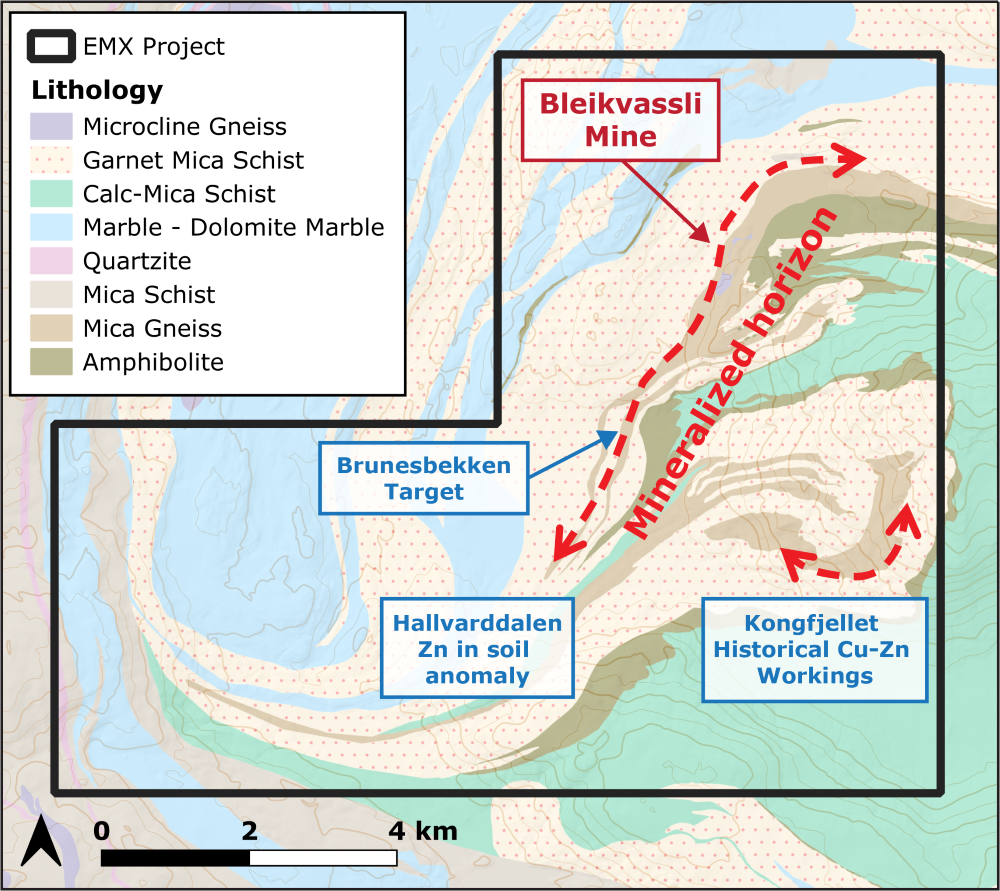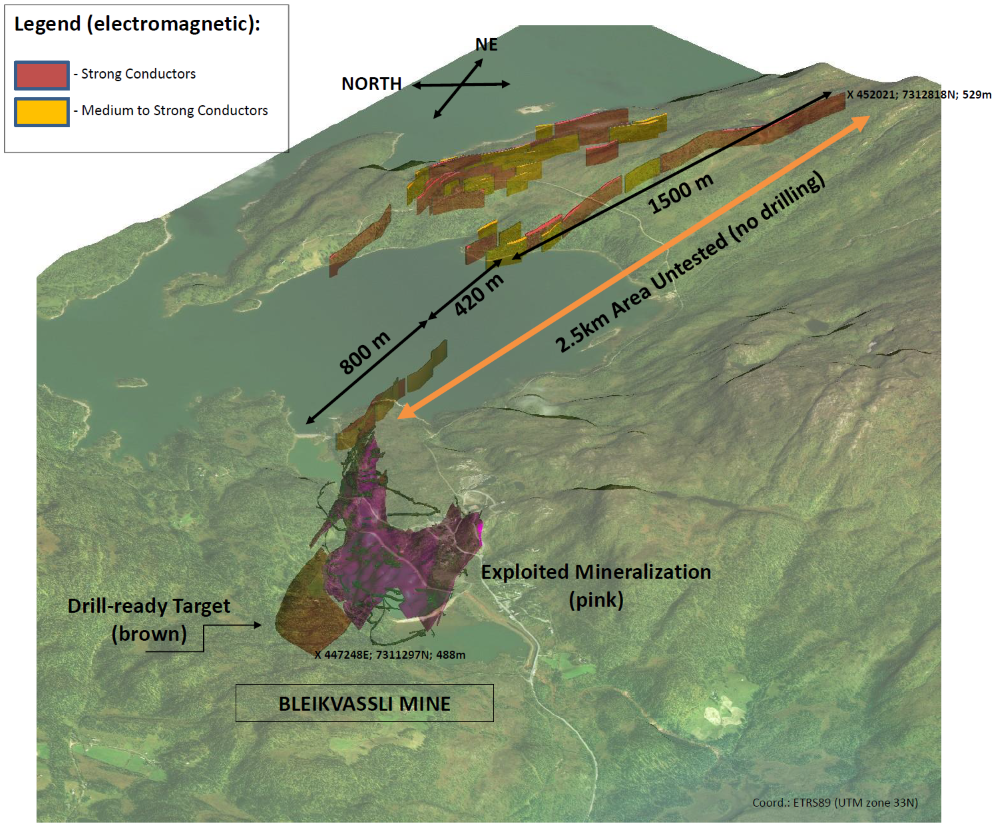Bleikvassli
The Bleikvassli project is located in central Norway. The project contains the Bleikvassli mine which closed in 1997 and produced ~5 Mt averaging 4.0% Zn, 2% Pb, 0.15% Cu, and 25g/t Ag*. The project is drill-ready and permitted, with a planned two-phase drill program. Phase 1 is designed to target the down-dip extension of existing workings at Bleikvassli Mine; Phase 2 is designed to test the broader extension of the mineralized horizon.
The host rocks consist of amphibolite grade, Nordland facies supracrustal rocks (schists, carbonates, quartzites, and amphibolites). Clear zoning patterns and hangingwall/footwall relationships with identifiable K-silicate alteration zones and redox horizons (analogous to the Zinkgruvan deposit in Sweden) are present. These patterns can assist in vectoring toward mineralization.
Precious metal contents have never systematically been assessed at Bleikvassli and there are still large, un- or under-explored areas within the project.
Three types of mineralization are seen at Bleikvassli; massive pyrite (Zn-Pb-Cu), massive pyrrhotite (Cu-rich), vein/disseminated wall-rock mineralization (with native Ag/Au).
Historical geophysical surveys detected several conductors along the same stratigraphic horizon as Bleikvassli Mine, some of which are connected to known mineralization. These conductors extend over a 2.5 km strike length, however, historical drilling only tested 200 m of this extension. Furthermore, sampling from additional prospects in the same stratigraphic horizon yielded elevated Cu-Zn grades and require systematic follow-up.
*Geological Survey of Norway Ore Database, Deposit Area 1832-012. (Norwegian Geological Survey)

 Click to Enlarge
Click to Enlarge
 Click to Enlarge
Click to Enlarge